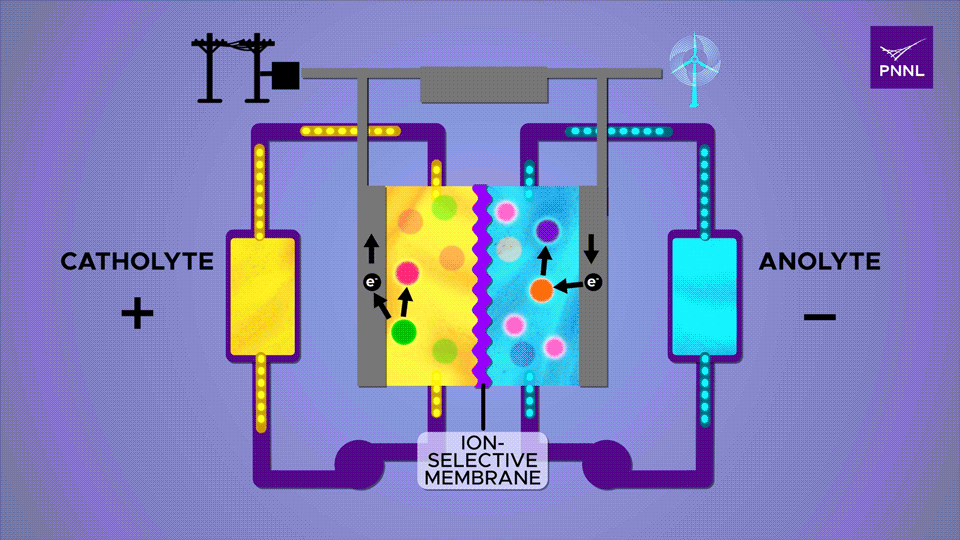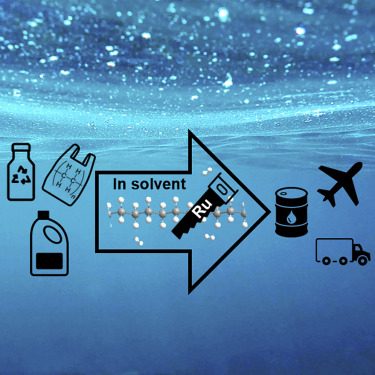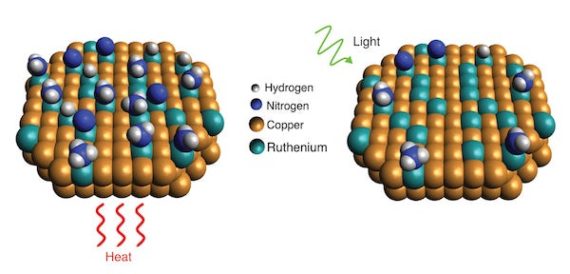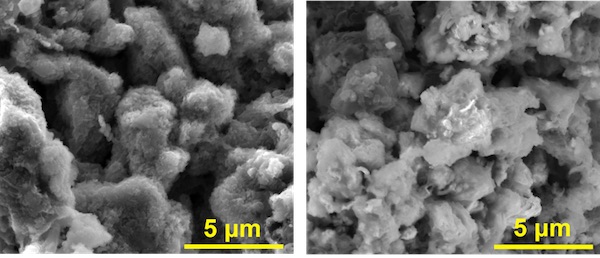Two groups of researchers in South Korea and America have added silicon and sugar as ways of gaining more energy from two different types of batteries. The 10X Battery at Last? Researchers at Pohang University of Science & Technology (POSTECH) in South Korea have developed a “layering-charged, polymer-based stable high-capacity anode material.” POSTECH professors Soojin Park (Department of Chemistry) and Youn Soo Kim (Department of Materials Science and Engineering) and Professor Jaegeon Ryu (Department of Chemical and Biomolecular Engineering) of Sogang University think their discovery could increase current electric vehicle range “at least 10-fold.” As noted in this blog many times, the idea of a 10X battery has been a matter of intense research from Yi Cui at Stanford and his research partner Jaephil Cho in South Korea, along with John Goodenough at Rice University and Jeff Dahn at Canada’s Dalhousie University – among others. Silicon and Polymeric Benders One of the bigger problems with using silicon in a battery …
Valuable Materials and Fuels from Trash
The Earth we inhabit struggles in an ever-tightening race between being overcome with its own trash and cleaning up after itself. Two stunning approaches to turning trash and waste into valuable materials and fuels could help us win that race. Graphene Dreams in a Flash Bigthink.com leads with the news that, “Graphene typically costs $200,000 per ton. Now, scientists can make it from trash.” This “insanely useful” product is difficult to produce, making it a luxury for many applications – until now. Graphene is insanely useful, but very difficult to produce — until now. Dr. James Tour and his Rice University students have created a way to produce graphene in large quantities in a literal flash. This technique, Flash Joule Heating, was discovered in Dr. Tour’s laboratory by graduate student Duy Luong. Also the lead author on the paper in the journal Nature, Luong “Did not expect to find graphene when he fired up the first small-scale device to find …
Silicone Wrinkles Can Be Beautiful
Hanqing Jiang, a professor in ASU’s School for Engineering of Matter, Transport and Energy, has come up with a clever and inexpensive way to fight dendrites in lithium batteries. Since these spiky little outbreaks can lead to battery fires, his team’s findings might lead to safer batteries. The approach involves silicone. Many of us put up a (usually futile) fight against wrinkles, our youth culture spending fortunes to avoid the inevitable. Scientists at Arizona State University, however, are encouraging wrinkles in their lithium-metal batteries, and pouring cheap silicone goo over their anodes to discourage dendrites from popping up. This novel approach to crafting lithium metal anodes for batteries is something Arizona State University scientists are working on, with surprising results. Hanqing Jiang, a professor in ASU’s School for Engineering of Matter, Transport and Energy, in the Ira A. Fulton Schools of Engineering Silicon or Silicone? Live Science explains an important distinction. “In short, silicon is a naturally occurring chemical element, …
Ammonia + Light = Hydrogen
Hydrogen continues on its course of always being five to ten years away as a cheap, viable storage mechanism for energy. The ideal of driving a car that emits only water vapor (or flying an airplane that zooms about on a few pounds of H2) seems like an ever-distant dream. Tina Casey, writing for Gas2.com reports on Rice University solution using stinky ammonia that might clear the air for hydrogen, though. She explains that the October 8th celebration of the fourth annual Hydrogen and Fuel Cell Day was great for natural gas stakeholders, since the gas is the primary source today for hydrogen. Her headline indicates this could become a leading way to store and extract H2: “Forget the Hydrogen Economy, Here Comes the Ammonia Economy.” So Desirable. So Hard to Get. Casey explains the big drawbacks to this market – fugitive greenhouse gas emissions and natural gas’s non-sustainable nature. Another factor, the often high cost of producing H2, adds to …
Better Battery Materials – Asphalt?
Asphalt, Graphene, and a Lithium Coating Mike Williams, reporting for Rice University in Houston, Texas, writes, “A touch of asphalt may be the secret to high-capacity lithium metal batteries that charge 10 to 20 times faster than commercial lithium-ion batteries, according to Rice University scientists.” We’ve written about James Tour and his laboratory before. He and his students come up with a plethora of new energy ideas and are able to demonstrate some exciting outcomes. His latest effort mixes asphalt with conductive graphene nanoribbons, and then electrochemically coats the composite with lithium metal to form a battery anode. The anode, when combined with a sulfurized-carbon cathode, was used in full batteries for testing. The results seem a bit incredible, with the ability to charge 20 times faster than commercial lithium-ion batteries. Being able to “refill” your electric car or airplane in five minutes rather than two hours or more would make electric vehicles practical alternatives to their fossil-fuel-powered cousins. After …
A Car (or Airplane) With That Cool Carbon Fiber Look
A research team at Australia’s Queensland University of Technology combined talents with scientists at Rice University in Houston, Texas to produce all-carbon structural panels that rival the best lithium-ion batteries for energy density, but can also be charged as quickly as supercapacitors. In fact, the panels are supercapacitors, “a ‘sandwich’ of electrolyte between two all-carbon electrodes,” made into “a thin and extremely strong film with a high power density,” according to researchers. These lightweight supercapacitor panels can be combined with “regular” batteries to “dramatically boost the power of an electric car.” This application would not be unlike Dr. Emile Greenhalgh and Volvo’s structural/electrical body panels. Postdoctoral Research Fellow Dr Jinzhang Liu, Professor Nunzio Motta and PhD researcher Marco Notarianni, from QUT’s Science and Engineering Faculty – Institute for Future Environments, and PhD researcher Francesca Mirri and Professor Matteo Pasquali, from Rice University in Houston, in the United States, created this breakthrough. They think the film could be embedded in a car’s body panels roof, doors, bonnet …
Gaining an Edge for Energy Production and Storage
Rice University scientists who want to gain an edge in energy production and storage report they have found it in molybdenum disulfide. From Wikipedia: “Molybdenum disulfide is the inorganic compound with the formula MoS 2. The compound is classified as a metal dichalcogenide. It is a silvery black solid that occurs as the mineral molybdenite, the principal ore for molybdenum. MoS 2 is relatively unreactive. It is unaffected by dilute acids and oxygen. In appearance and feel,molybdenum disulfide is similar to graphite. It is widely used as a solid lubricant because of its low friction properties and robustness.” Let’s break down one probably unfamiliar term (it was to your editor). A chalogen is one of the members of the Vla group in the periodic table and includes oxygen, sulfur, selenium, tellurium, and polonium. Add a more electropositive element to one of those and we get a chalogenide. Double down and make it a dichalogenide, in this case a material that looks similar to graphene, but more three-dimensional, with three layers because it has slab of molybdenum sandwiched between two …
Three Battery Technologies with Great Potential
It’s a good week when at least three battery developments show promise for electric vehicle use in the near future. One advanced lithium-ion battery from France, a dual-carbon battery from Japan, and a supercapacitor that one can wrap around one’s finger comprise the trio. French Lithium-Tin Dioxide “Synthesizing nanoparticles of tin dioxide (SnO2) in the pores of a carbonaceous material,” researchers at the Institute of Materials Science of Mulhouse and Charles Gerhardt Institute of Montpellier, part of an electrochemical energy storage consortium called RS2E, have found the material to have “remarkable properties.” Their work is the subject of a patent and published in the journal, Advanced Energy Materials. Researchers, hoping to obtain better performance that that achieved with carbon electrodes, tested combinations of nickel (Ni), iron (Fe), cobalt (Co), and other materials before hitting on tin dioxide as a material of choice. All have (theretically) far greater electrochemical storage capacity than graphite, but expand and contract during charging and discharging of the battery, …
Vanadium Oxide/Lithium Batteries Offer Promise of High Power, Long Life
Henry Ford once brought a French metallurgist to Detroit, part of his plan to build cars with lighter, stronger steel. Vanadium, which the French used in their automobiles, offered him the chance to make the Model T lighter and stronger, and its part in the car’s alloyed steel gave the Model T the longevity which followed it through one of the longest production runs in history. Now battery researchers are looking at another quality of this mineral, its ability to form a superior cathode for batteries that “could supply both high energy density and significant power density. Combined with graphene, the wonder material du jour, vanadium oxide (VO2) could couple longevity echoing the Model T’s with charge and discharge rapidity similar to a supercapacitors. Materials scientist Pulickel Ajayan at Rice University created ribbons of vanadium oxide (VO2) thousands of times thinner than a sheet of paper, and combined those with atom-thick ribbons of graphene to form cathodes which were built …
Crushed, Rolled, or Slivered, Silicon Boosts Batteries
Two different Rice University research teams are applying different but related approaches to using silicon in lithium batteries to make them more energy dense and longer-lived. One team recently came up with a paint-on lithium battery, announced a way to use otherwise waste silicon by crushing it and spreading it on anodes in their test batteries. This has implications for manufacturing because of the simplicity of the process. Dvice.com gives one hint as to why this might be good. “In lithium-ion batteries, for example, the anode is usually graphite, because it works well and is cheap. “You know what else is cheap? Silicon. The Earth is 28% silicon, making it the second most abundant crustal element by mass after oxygen. And it makes a fantastic battery anode, too: it can hold 10x more lithium ions than graphite. However, if you cram it full of all those ions, it swells in size [up to three times] and will damage itself, which …
- Page 1 of 2
- 1
- 2





